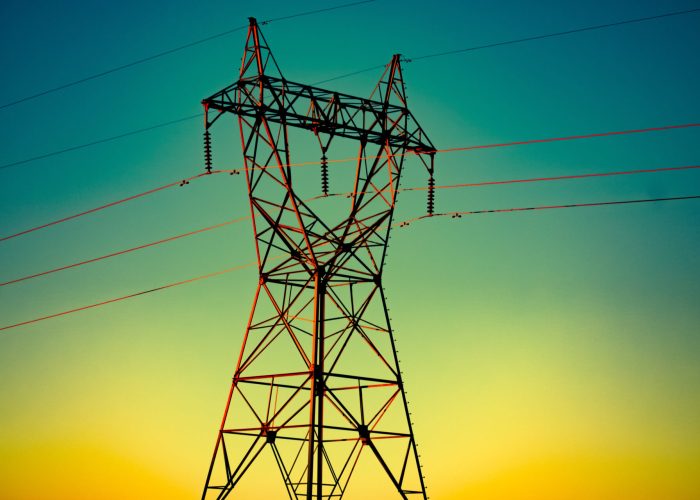Determining Building Efficiency Baselines
Buildings can use the voluntary EPA program, ENERGY STAR, to gauge their energy efficiency. ENERGY STAR is a government-established program to reduce greenhouse gas emissions and other pollutants caused by inefficient energy use. The ENERGY STAR score is a measure of how well a building performs relative to similar buildings when normalized for climate and operational characteristics. The score is based on a scale of 1 to 100, with 1 representing the worst-performing buildings and 100 representing the best-performing, eco-friendly buildings. Scores of 50 indicate that the building is performing at the industry average, while 75 or higher indicates that a building may be able to earn an ENERGY STAR label for its high performance.
To determine this score, Owners can utilize the EPA’s ENERGY STAR Portfolio Manager. It allows Owners to input their utility data to measure and track their building’s energy and water consumption, as well as their greenhouse gas emissions. The tool can be utilized for any building, anywhere. It even helps benchmark performance against the whole portfolio of buildings.
Once the energy efficiency score of a school has been established, it will be easier to determine which areas need improvement. Comparing power consumption rates and costs of a facility to the national average will show whether the current state of the school building is reaching its highest energy efficiency potential.
Energy Conservation Measures for Public Owners
The average commercial building wastes 30% of the energy it consumes, but it doesn’t have to. There are a number of no-cost, and low-cost improvements buildings can make to reduce their energy consumption, including:
- Communication and education: Clearly define energy efficiency and educate employees/building occupants on their energy behaviors and how they can personally affect change; start internal initiatives to encourage lower energy consumption, including behavior-based energy programs.
- Operations and maintenance: Conduct routine maintenance of facility systems, identifying any potential issues and correcting them to ensure they are functioning efficiently.
- Lighting: Turn off lights when not in use, maximize daylight, and remove unnecessary lighting.
- Equipment: Use smart plugs or power management functions on electronic equipment, such as computers, monitors, and printers.
- Heating and cooling: Monitor and adjust the thermostat with seasonal changes, regularly change HVAC filters, use shades/blinds to control direct sun heating and seal exterior doors and windows when using HVAC.
In addition, there are several extensive changes an eco-friendly building can make to further reduce its energy consumption, including:
- Operations and maintenance: Retrofit buildings with more efficient systems, implement energy audits to identify problem areas, and routinely monitor and repair systems to ensure they function as intended.
- Lighting: Retrofit buildings with LED lighting and install light sensors to automatically turn off when rooms are not in use.
- Equipment: Upgrade to ENERGY STAR-certified electronics.
- Heating and cooling: Upgrade and maintain heating/cooling equipment.
Energy Efficiency in Public Schools
According to ENERGY STAR Portfolio Manager, schools can have an Energy Use Intensity (EUI) ranging from less than 50 to more than 500 kBtu/ft2. ENERGY STAR’s portfolio manager provides a 100-point scale to compare the energy efficiency of buildings in the United States. Schools that receive a score of 75 or above are considered highly efficient. According to ENERGY STAR’s report, schools that rank in the bottom 5% of the scale consume four times the amount of energy as highly efficient schools.
70% of that energy is used for lighting, heating/cooling, water heating, and plug loads (computers, printers, office equipment, etc.). Furthermore, school districts nationwide are spending $8 billion annually on energy costs, making it second only to personnel costs in terms of the overall budget. It is estimated that $2 billion of that spending can be saved by improving energy efficiency in K-12 schools, which is equivalent to the cost of nearly 40 million new textbooks.
There are certain features of a green building that can have a strong impact on the amount of energy a school or large facility consumes. Depending on the location, some schools have to run heating and cooling systems for longer periods of time than others, which greatly increases their energy consumption. Schools with 2 or more computers per 1,000 square feet also require more power, as do facilities with multiple walk-in refrigerators to service large cafeterias.
The ENERGY STAR Scoring system takes these features, as well as the building’s size, into account when determining the energy efficiency score. Schools are compared to an expected EUI based on the building’s square footage and appliances. If the building uses less than what is expected, it is ranked higher on the scale.
Benefits of Energy Efficiency Upgrades in Schools
- Reduced Energy Costs: Schools can reduce their energy costs by as much as 30% in existing facilities by switching to energy-efficient appliances, lighting fixtures, and HVAC systems.
- Reduced Greenhouse Gas (GHG) Emissions: Lowering dependency on fossil fuels for electricity can decrease CO2 emissions that contribute to air pollution.
- Improved Learning Environment: Indoor air quality and thermal comfort can be improved with ventilation; visual comfort can be improved with more evenly distributed lighting, and noise levels from building systems can be lowered to provide less distraction. Learn more about Optimal Learning Environments for students.
- Enhanced Educational Opportunities: Energy-efficient school buildings can aid with energy and environmental curriculum, providing hands-on opportunities for students to learn about the benefits of sustainable energy. Promoting campus energy projects to students gives them a unique, hands-on learning opportunity about energy consumption and efficiency. Classroom solar curriculum is also something to consider for K-12 school solar projects.
- Reduced Waste and Increased Recycling: Schools and large facilities produce copious amounts of waste that are typically dumped into landfills. The cost of a waste management system for a school can be in the hundreds of thousands of dollars, as most schools generate between 48 to 99 pounds of waste per student every year. Implementing better recycling programs and reducing waste can save schools thousands of dollars on waste management costs.
- Tax Credits and Incentive Programs: Many state governments offer incentives to schools, buildings, and residential homes to improve their energy efficiency. Some states also offer rebate programs, funding and loan options, and grants for schools to implement energy efficiency projects.
Energy Efficiency in Municipal Buildings
State and local government buildings such as courthouses, fire stations, police stations, public libraries, and correctional facilities can have an Energy Use Intensity (EUI) of 200 kBtu/ft2 or more, according to ENERGY STAR. According to a study by the National Association of Counties and the Institute for Building Technology and Safety, about 50% of county facilities have an EUI at least twice the national median. It is important for public buildings to lead by example when it comes to energy efficiency.
Energy-Focused Improvements for Cities and Towns
All public entities can participate in these energy-saving programs, including state, county, and city governments, and K-12 schools.
- Behavior-Based Energy Programs: Public entities can benchmark energy data, pinpoint behaviors impacting energy efficiency, and roll out programming designed to change those behaviors and increase energy efficiency.
- Energy Savings Performance Contracts: These programs allow governments to pay for facility energy upgrades with the savings that result from those upgrades.
- Renewable Energy: With the dramatic decline in manufacturing, installation and equipment costs, solar power is more cost-effective than ever before. Solar systems have a 25-year power production warranty and an average lifespan of 50 years or more, so an investment in solar saves millions of dollars in utility costs in the long run.
- Advanced Metering Infrastructure (AMI) Upgrades: Installing new smart water meters not only reduces leaks but provides accurate, real-time reporting of water usage, which reduces operational costs for cities that manage residential and commercial water.
- Smart City Infrastructure: Infrastructure improvements that reduce energy consumption and help save on maintenance and operation costs are good for the environment and community. Smart city improvements such as onsite power generation, smart water meters, networked streetlights, and electric vehicle chargers can make cities and towns across the U.S. more resilient.
Benefits of Energy-Focused Improvements for Cities and Towns
- Reduced Energy and Operational Costs: Public buildings reduce their energy costs by as much as 30% in existing facilities by switching to energy-efficient appliances, lighting fixtures, and HVAC systems.
- Leading by example: It’s important for cities and counties to set an example of stewardship with taxpayer dollars.
- Tax Credits and Incentive Programs: Cities and counties can take advantage of state rebates and utility incentive programs.
- Accurate Utility Reporting: Replacing old water meters with smart meters reduces operational costs and losses due to water leaks and inaccurate water use reporting.
If you’re ready to explore how to save energy at your facility, get in touch below!





